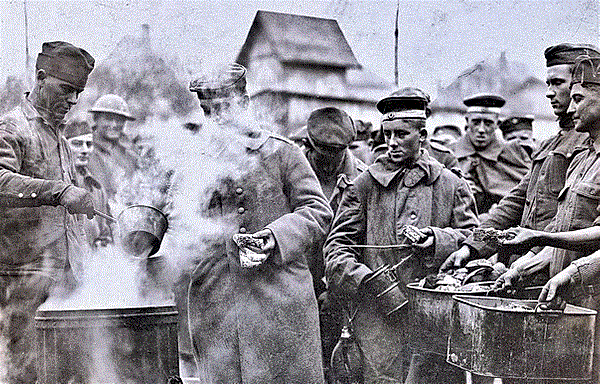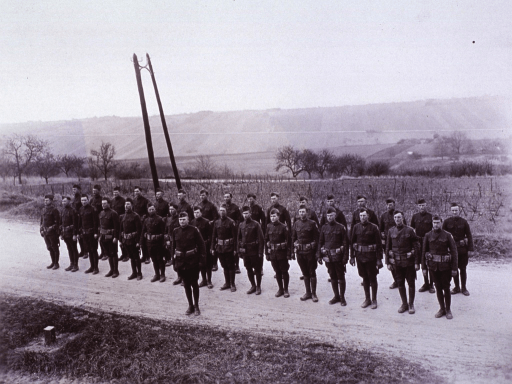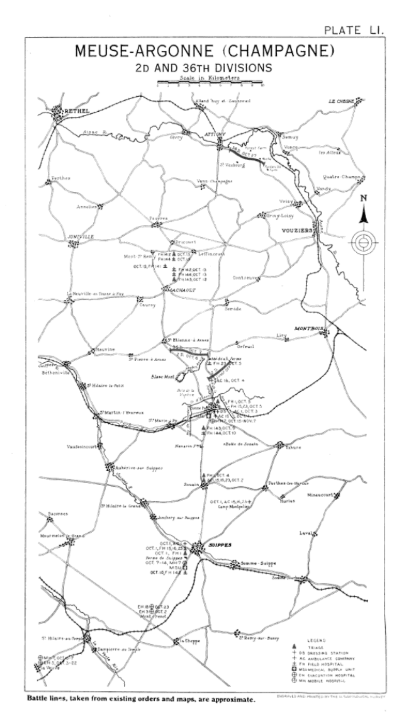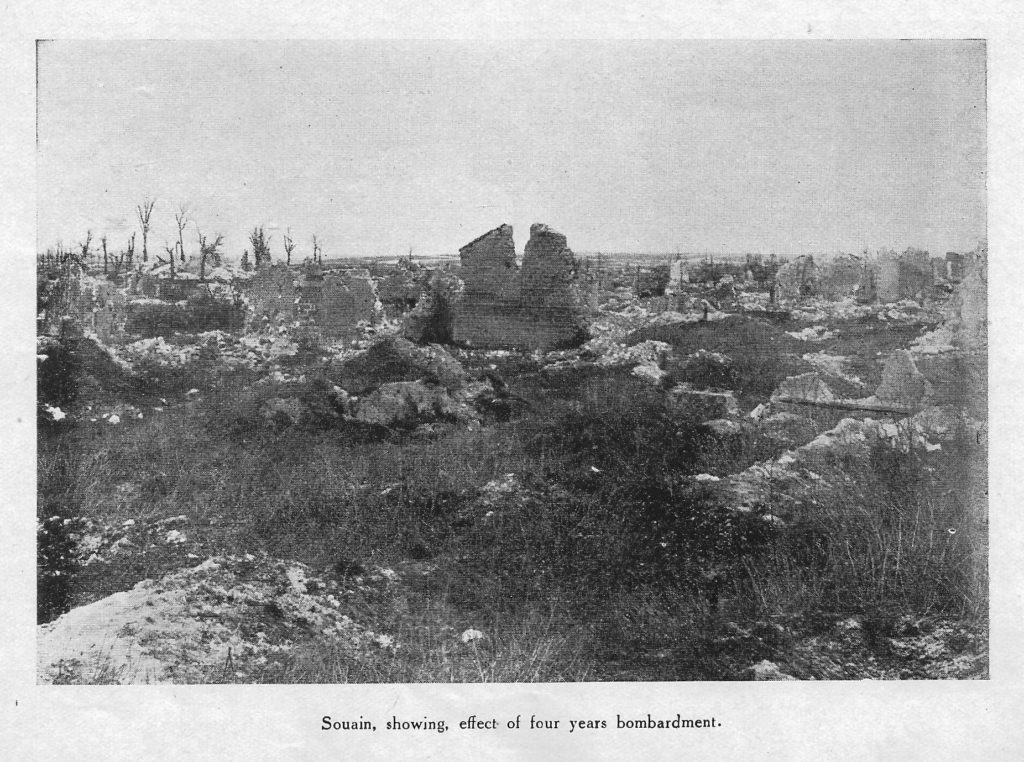By 5:30 p.m. on October 27, 1918 it was dark. Men of the 36th Infantry Division unpacked their pickaxes and shovels and started digging. They had just seized Forêt-Ferme, a series of German strongholds along the Ardennes canal and Aisne river. However, the German defenders were taken completely by surprise; nearly two hundred had surrendered. Enemy artillery fell on Forêt-Ferme sporadically, but darkness hindered the Germans’ aim. So the men dug in and were protected by daybreak.
The hill had been taken by 2nd Battalion, 141st Infantry Regiment and 3rd Battalion, 142nd Infantry Regiment. 3rd Battalion, 142nd was commanded by Captain Steve Lillard, who led L Company at Saint-Étienne. Lillard moved up from L Company to 3rd Battalion just three days before, because of his leadership and calmness under fire at Saint-Étienne. With experience of that battle as his guide, Captain Lillard made sure his men were prepared and that artillery support was on target.

The last day
German shelling resumed the next morning, October 28th. The men who had captured Forêt-Ferme held for thirty-six hours while waiting to be relieved from the line. German artillery had little effect this time but waiting was all the worse for those expecting to leave combat. Lillard wrote that “all of our supporting troops, including the artillery were withdrawn and we were left to the mercy of the German artillery with French infantry to support us and with French artillery to give excuses for not firing when we called upon them to do so.”
So, the men stayed in their holes, watched, and waited. First Lieutenant F.W. Mogford of the 142nd Infantry wrote about the enemy: “He is a curious rascal and tries all kinds of tricks. First he would shell us with high explosive, if that didn’t do much harm he would give us gas, and then combine the two. Occasionally his air planes would drop enough German propaganda to furnish us with reading material for several hours, such as it was. The 164th French Infantry relieved us during the night of Oct. 28th. Then the hardened Texas boys and Indians began their march back to safety.”

Medical Men
Close to the action were the medical men of the 36th Division. Each regiment was equipped with an Ambulance section and a Field Hospital company. In addition to these, each regiment also had First Aidmen who would treat wounded men in battle conditions. For the assault on Forêt-Ferme, 3rd Battalion, 142nd Infantry set up its Aid Station in Méry, a tiny village about two kilometers from the fighting. Aidmen would carry the wounded to the Aid Station there, and then another kilometer to the Regimental Aid Station at Chouffilly. Ambulances were there at Chouffilly to evacuate more severely wounded men.
Four Ambulance sections of the 36th Division were joined by United States Army Ambulance Service section No. 586. The 36th Division located its four Field Hospitals in the Leffincourt – Dricourt area, about eight miles away. Ambulances would wait near Dricourt until one left the Aid Station in Méry, then an Ambulance would move to replace it. The most seriously wounded men were evacuated to Evacuation Hospital No. 3, Mobile Hospital No. 7, and Evacuation Hospital No. 5, all near Suippes, about 22 miles away. It was hazardous work: On October 9th, a direct hit on an Aid Station killed seven 143rd Infantry Aidmen.

The way out
As early as October 27th, the 143rd Infantry Regiment and other elements of the 36th Infantry Division began to pull out of position on the front line. These soldiers spent the night of the 27th in Machault, about seven miles from the front. In addition, the 144th Infantry and parts of the 141st and 142nd Regiments pulled out on the 28th, marching to the south. On their way some of the men were able to stop by Saint-Étienne, where they had fought just two and-a-half weeks before. For men of the 142nd, it was a chance to see the graves of 144 of their comrades and to reacquaint themselves with the exact place and circumstance of their deaths.
Withdrawing soldiers spent the night of October 28th just south of Somme-Py, where the 36th first entered the combat area on September 6th. After three weeks, the surviving veterans of the 36th noticed how thin their ranks had become. Now they were out of harm’s way, they were relieved to be off the line.

Withdrawal
At Forêt-Ferme, soldiers of the 141st and 142nd Infantry were relieved by the French around 3:30 a.m. on October 29th. Within the hour they marched out, having spent 23 days in harm’s way. They marched several miles to trucks the French provided, and were transported through Saint-Étienne to Somme-Py. From there they made their way to Camp Montpellier, a bivouac between Souain and Suippes.
There wasn’t much to Camp Montpellier; just some barns and haysheds. No straw, but for many of the men it was their first night under a roof in three weeks. Just to have a warm meal and a campfire began what was, for the men of the 36th Division, an unlikely journey away from the front.


